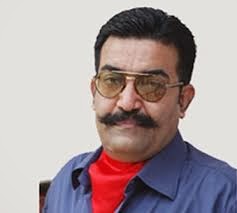Cricket and Rishiraj Singh
His efforts to keep erring motorists
out of the road was lauded by many. Now, Transport Commissioner Rishi Raj Singh
will be seen hitting the ball out of the stadium, at the inaugural match of SBT
Journalist Premier League on Thursday. He is wielding the bat for the star
studded celebrity team, also comprising film stars, MLAs and politicians that
will go against the Trivandrum Press Club Team.
In the midst of the official
responsibilities, the moustachioed officer known for his stern ways of
maintaining law and order, shared his thoughts about the first ever JPL and
also the role of cricket in his life.
He says that he is an ardent admirer
of the original little master Sunil Gavaskar. He also cherished his
participation in the state level cricket matches, leading his team as a
captain, a role which he still continues to play albeit in a different ball
game.
“While I was in Hyderabad for the
IPS training, I was astounded by the performance of Javed Miandad in the
Sharjah cup finals which bestowed Pakistan’s victory against India. I am also a
critical enthusiast of the game. I completely respect the ‘Master Blaster’,
Sachin Tendulkar who immensely contributed to elevate team India’s game to top
level,” said Rishi Raj Singh.
He also opined that Journalist
Premier League (JPL) will be a kind of entertainment rather than competitions
as the participants are not the professional players. “I foresee the league
matches with great expectations. Such events should be regularly conducted every
year in order to bridge the gap between people hailing from different strata of
the society,” Singh said.



